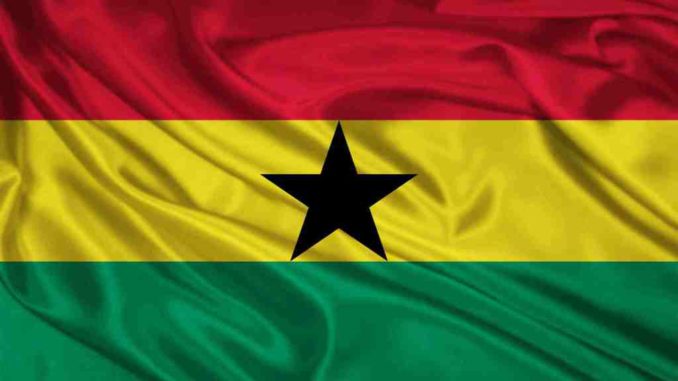
…at 21 percent going into the September meeting, the central bank’s policy rate is way too high, relative to the inflation outlook. That is, despite having cut rates by 450 basis points already this year. Since there is no doubt the BoG would ease rates even further, the advocacy here is that it should do so faster. The economy needs the lift.
After earlier boasts about no plans to extend Ghana’s US$918 million aid programme with the International Monetary Fund (IMF), which the country agreed to in April 2015, the still new Nana Akufo-Addo administration was saved from a potential mis-step in late-August, when the Bretton Woods institution graciously decided to extend the package anyway, by another year from April 2018; much to the relief of market participants. Another good news came in one day after the Bank of Ghana (BoG)’s monetary policy committee (MPC) started its meeting in September (decision due on the 25th): the International Tribunal for the Law of the Sea (ITLOS) ruled Ghana was within its right to drill for oil in an area of the Atlantic Ocean it considered within its maritime boundary, after Ivory Coast contested its right to do so. Had the outcome been adverse, the US$6 billion Tweneboa, Enyenra, and Ntomme (TEN) oil fields located in the disputed area, which produced their first oil in August 2016 and are expected to pump 80,000 barrels per day in 2017, would have been in jeopardy. Prices for Ghana’s still dominant export, cocoa, in the international markets remain poor, however; down about 30 percent from a year ago. And even though gold, its other major source of foreign exchange, has been doing well in the international markets lately (up 15 percent from December last year), local production is likely to suffer this year, as the authorities clampdown on illegal small-scale mining (locally termed “Galamsey”). So put together, the authorities’ finances may suffer a little this year.
Take Control and Diversify
The authorities are not standing idly by while this happens. Together with Ivory Coast, plans are afoot to ensure both governments have greater control over international cocoa prices. In this regard, they plan to build special warehouses to store cocoa beans, enabling them to mop up excess stock when there is risk of a supply glut like is the case currently, or add to supply when there is a scarcity. That capacity won’t be in place for at least another year, though, as a US$1.2 billion loan request to the African Development Bank (AfDB) is yet to be approved, making it more likely that the infrastructure may only become available in the 2018/19 season. The authorities are geared for the current 2017/18 season, though. In September, the Ghana Cocoa Board (Cocobod) secured a US$1.3 billion loan from international banks to fund purchases from farmers, which would start in October. The amount is almost 30 percent lower than the US$1.8 billion it raised for the 2016/17 season. Considering that even that much ran out months before the end of that season, with the Cocobod having to seek US$400 million in bridge financing, the ability of the board to offer attractive prices in the 2017/18 season may be similarly constrained. Thus, smugglers who go across the border to Ivory Coast for better prices are likely to continue having bumper paydays for a little while longer.
Things are looking up in other areas, though. Power cuts are no longer the norm. And the authorities are acting proactively to ensure there is a low probability of running out of gas for generating power in the future, one of the reasons why electricity was short in the past.
Still, there is more the authorities could do to diversify the country’s agricultural base. It does not make sense that a country with such fertile land imports almost three-quarters of its food supply. Efforts to boost local production have not been successful, however. True, there have been investments here and there. But as structural constraints remain, returns have underwhelmed. In some cases, factories built to process agricultural produce simply closed shop, after supply of inputs failed to keep pace. Authorities expect that its ambitious “one district, one factory” programme would change this poor state of things. It remains to be seen whether it would, but early indicators are not encouraging. Things are looking up in other areas, though. Power cuts are no longer the norm. And the authorities are acting proactively to ensure there is a low probability of running out of gas for generating power in the future, one of the reasons why electricity was short in the past. The government signed a 12-year gas supply deal with Russia’s Gazprom in September, after a 15-year one with Equatorial Guinea just a month before. That is, despite the likelihood that Ghana may become self-sufficient in gas by end-2018, when the 180 million cubic feet per day Sankofa gas field is expected to come onstream.
Capitalise on Slowing Inflation
Annual consumer inflation may very well be in the high single-digits from early 2018. My forecasts put the headline inflation at about 8 percent then. But it would likely be in the 10 percent range before end-2017, from 12.3 percent in August. So at 21 percent going into the September meeting, the central bank’s policy rate is way too high, relative to the inflation outlook. That is, despite having cut rates by 450 basis points already this year. Since there is no doubt the BoG would ease rates even further, the advocacy here is that it should do so faster. The economy needs the lift.
Rafiq Raji, a writer and researcher, is based in Lagos, Nigeria.
END

Be the first to comment